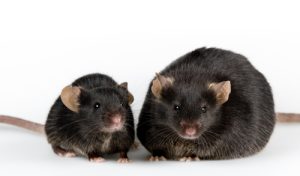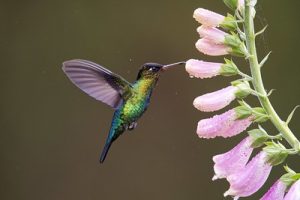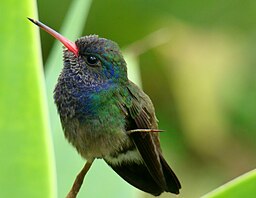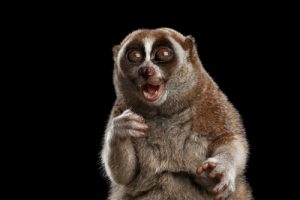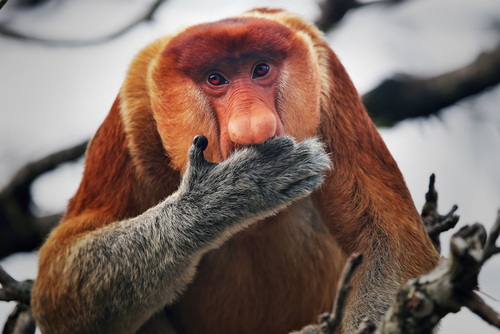
In general, the term “monkey” applies to more then 300 species of tailed primate, though this excludes lemurs, tarsiers, and lorises. They are found throughout much of the tropical/subtropical regions of Africa, Asia, South America and Central America. The vast majority of monkey species live in tropical forests and tend to move on all four limbs. The highly intelligent primates are sociable animals and tend to live in large groups. They are, for the most part, arboreal (tree dwellers) and diurnal (mostly active during daytime).
Not too unsurprisingly, the species come in a great variety of size, shape and colour. Here’s, what we consider at fiveminutesspare,com to be five of the world’s most spectacular monkeys:
Proboscis Monkey
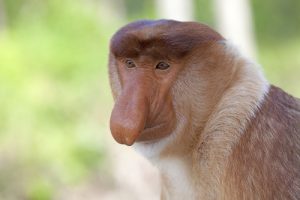
Photo credit: Kjersti Joergensen/Shutterstock.com
I would hazard a guess that the Proboscis monkey is likely to be judged by many people as being far from easy on the eye. However, as we know, according to the old saying “Beauty is in the eye of the beholder”. And, that certainly seems to hold true in the monkey world. Why? Because the larger a male Proboscis monkey’s snout, the more attractive he is likely to be to a potential mate.
The Proboscis monkey, also known as the long-nosed monkey, is endemic to the island of Borneo. It inhabits mangrove forests along rivers and estuaries, swamp-land, lowland rainforest and other wetland areas. The species is sexually dimorphic, meaning the appearance of males and females is strikingly different. Mature females are not much more than half the size of an adult male and have much smaller noses.
The Proboscis monkey is currently under threat mostly due to loss of habitat. In addition, it is also hunted locally for its meat and perceived medicinal constituents. Its numbers have steadily fallen over the last four decades, such that the species is now classified as “endangered” by the International Union for Conservation of Nature (IUCN). Some experts have estimated the current population of the Proboscis monkey to be around 7,000, though others think that its numbers are much less.
Mandrill
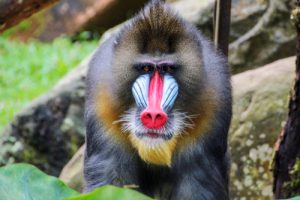
Photo credit: LiaoZhuangDjiu/Shutterstock.com
The extraordinary-looking mandrill is the world’s largest monkey species and arguably, the most spectacular. However, it is only the male mandrills that have distinct blue and red faces, whilst females and juveniles have grey or brown faces. For many years, the old-world monkey was thought to be a relative of the baboon but recent scientific investigation has proved otherwise. It is in fact the only species of the Mandrillus genus.
The mandrill is native to parts of the West African countries of Southern Cameroon, Gabon, Equatorial Guinea, and the Congo. They typically spend most of their time habituating the ground of tropical rainforests but are also known to travel across savannahs. The species is sexually dimorphic, with males being much bigger and colourfully marked than females. Mandrills tend to live together in large groups which are dubbed “hordes”. These groups often consist of several hundred individuals.
The mandrill is currently classified as “vulnerable” by the IUCN. The biggest threats the species faces are the destruction of its habitat and being sought as prey for bushmeat. The numbers of the shy primate are generally falling in all countries except Gabon. The country, with a relatively low population density and vast rain forests, is seen as the mandrill’s most important refuge. There are no reliable estimates of the global mandrill population but experts believe it may have decreased by as much as 30% in the last two decades.
Dusky Leaf Monkey
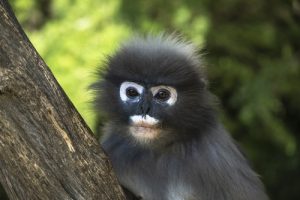
Photo credit: le Point du Jour/Shutterstock.com
If there’s one primate that looks as though it might be up to “monkey business”, it would have to be the dusky leaf monkey. Also known as the spectacled langur or the spectacled leaf monkey, males and females look similar, though the latter is generally smaller. Both sexes have black fur with white patches on their chest and stomach, but most strikingly, around their eyes and mouth. Infants are born yellow or orange but gradually begin to develop adult colouring after 6 months.
The Dusky leaf monkeys’ range is throughout the forests of the Malay Peninsula, Southern Myanmar and parts of Thailand. The social primate generally lives in family groups consisting of 5-20 individuals. The arboreal monkeys spend most of their lives in trees at least 30 m above ground.
The dusky leaf monkey population is currently under increasing threat from local hunters, loss of habitat (due to increasing urbanisation and industrialisation), and high levels of road kill. There is no recognised accurate estimate of the Dusky leaf monkey total population. However, with numbers decreasing daily, the species is currently classified as “near threatened” on the IUCN Red List.
Red Shanked Douc
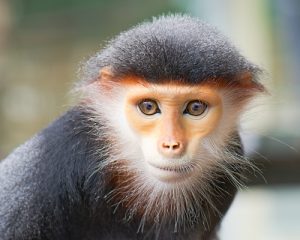
Photo credit: TigerStocks/Shutterstock.com
The red-shanked douc is a medium-sized monkey with a slender frame, mask-like facial features and brightly coloured red-orange fur. To the causal observer it looks very much like something you might pick up in a toy shop. Amid stiff competition, it can rightly be considered one of the world’s most attractive species of monkey. Male and female red-shanked doucs have similar colouration, though the latter is a little smaller in stature.
The red-shanked douc is endemic to the lowland evergreen forests of Vietnam, Laos, and northern Cambodia. The arboreal monkey species spends most of its days living amid the forest treetops in groups of up to maximum of about 20 individuals.
The red-shanked douc is currently classified by the IUCN as a “critically endangered”. The main threat to the ever declining population is from hunting, loss of habitat, and the pet trade. Currently, there is no reliable estimate of the red-shanked douc’s global population. However, the protected population in Son Tra, Vietnam is somewhere around 1300. While sparsely populated Laos is seen as the best place to offer a chance of survival for the species it currently does not have any form of protection programme.
Gelada Monkey
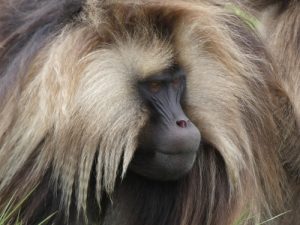
Photo credit: Floris van Alphen/Shutterstock.com
The gelada monkey is also known as the gelada baboon or the bleeding-heart monkey. The large and robust primate is covered with beige to dark-brown, coarse hair and has a dark face. Distinctively, they also has a patch of red skin in the centre of their chest. The adult male also has a long, thick cape of hair on its back. Hence, you could easily be forgiven for thinking it had just stepped off the set of the latest instalment of “Planet of the Apes”.
The species of old-world monkey is only found in the Ethiopian Highlands, living at elevations of between 1,800 –4,400 m above sea level. They are the last surviving species of grass-grazing primates, where grass can make up to 90% of their diet.
In 2008, the IUCN assessed the gelada population as being around 200,000, and thus of “least concern”. However, this number had reduced from an estimated 440,000 in the 1970s. The current rapidly expanding human population of Ethiopia has seen the gelada monkey come under further threat. Peril to the species mostly comes in the form of loss of habitat, hunting and poaching, which often sees the beguiling monkey shot as a crop pest. Today, it’s estimated that the gelada population may be as low as 50,000.
Header photo credit: Ryan M. Bolton/Shutterstock.com
